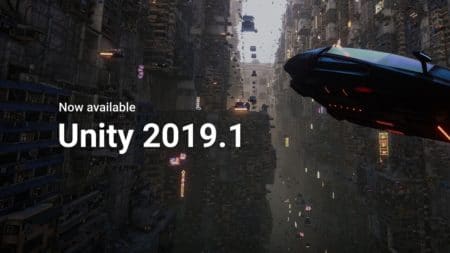The Game Developer Conference (GDC 2019), which took place earlier this month, came with many exciting announcements, some of which bear down on the professional 3D markets we cover here at Architosh. We’ve been writing about the game engines and their key emergence in the professional 3D markets for a few years now. They continue to advance and offer much to non-gamer markets.
Unity 2019.1 — What’s New
For Unity Technologies, they launched Unity 2019.1 this month at GDC 2019. It includes more than 300 new improvements. Let’s look at some of the key ones.
This new release includes the new Lightweight Render Pipeline, which garners users high-performance optimized for mobile devices. This is a scalable graphics rendering technology and scriptable render pipeline (SRP). Using C# script developers can better meet the needs of mobile game creators as well as mobile pro app creators basing their solutions on Unity. Scaleable graphics technology means the technology can scale the graphics pipeline technology to the maximum range of graphics potential per device, from high-end devices to low-end devices, from desktop and game console to smartphone. This LWRP is supported on all major desktop, game console, and mobile platforms.

01 – Unity Technologies launched Unity 2019.1 at the 2019 GDC earlier this month. The new update boasts excellent new features for more performant experiences.
Related, Unity 2019.1 includes Mobile Adaptive Performance in preview, which provides device-level optimization for apps made with Unity on Samsung’s Galaxy S10 and Galaxy Fold (with more headsets to be added in the future).
“With the release of Unity 2019.1, we are continuing to deliver on our promise of making Unity the most powerful and accessible real-time 3D development platform, regardless of team size or skill level,” said Brett Bibby, Vice President of Engineering, Unity Technologies. “Powered by production-ready versions of the Lightweight Render Pipeline, and the Burst Compiler from the Data-Oriented Tech Stack, Unity 2019.1 will help further expand our leadership in mobile, while also pushing the capabilities of our platform to provide even greater support for high-performance, high-fidelity creations.”
Key Features New in Unity 2019.1
Here is a list of many of the key features in the new Unity.
-
Lightweight Render Pipeline (Release) – now production ready, a pre-built Scriptable Render Pipeline that is optimized for delivering high graphics performance. It’s scalable to mobile platforms, as well as high-end consoles and PCs.
-
Burst Compiler (Release) – the Data-Oriented Tech Stack unlocks high-performance, multithreaded capabilities on Unity that scale all the way from the high-end to the low-end platforms, empowering developers to achieve high-end performance faster. The Burst Compiler is a component which compiles Entity Component System C# Jobs to leverage comparable performance to hand-optimized custom solutions.
-
Shader Graph (Release) – artists now have the power to easily customize object surfaces without writing any code through a real-time drag-and-drop interface, encouraging experimentation and speeding up the iteration process.
-
Mobile Adaptive Performance (Preview) – building on Samsung’s GameSDK, Unity and Samsung have partnered to help developers optimize their mobile game experiences on the Samsung Galaxy S10 and Galaxy Fold, balancing hardware demands to provide a better user experience on mobile. More handsets will be added in the future.
-
Unity Physics (Preview) – Unity has partnered with Havok to build a world-class physics system on top of the Data-Oriented Tech Stack. The new physics system, Unity Physics, is available now, while Havok Physics will be available in June.
-
AR Foundation Framework (Preview) – will allow developers to build once and deploy across ARKit and ARCore. It also helps them overcome some of the common challenges of AR development, such as anchoring digital objects in the real world, the visual fidelity of those digital objects, and more, saving hours of time and resources.
Unity 2019 continues the biggest evolution in the history of Unity, and the latest innovations were on display at GDC 2019. Creators looking to get the most out of modern GPUs were shown The Heretic, the latest real-time cinematic from the Unity Demo Team. (see below).
The Heretic utilizes the High Definition Render Pipeline technology, demonstrating real-time cinematic render qualities.
It utilizes the High Definition Render Pipeline, along with other off-the-shelf Unity technologies, to demonstrate what is possible today in Unity. Additionally, Unity announced that it is working closely with NVIDIA to offer production-focused early-access for real-time ray tracing in the High Definition Render Pipeline, with an optimized preview solution available for customers in the second half of 2019.
To see the full list of Unity 2019.1 updates visit here.



Reader Comments
Comments for this story are closed